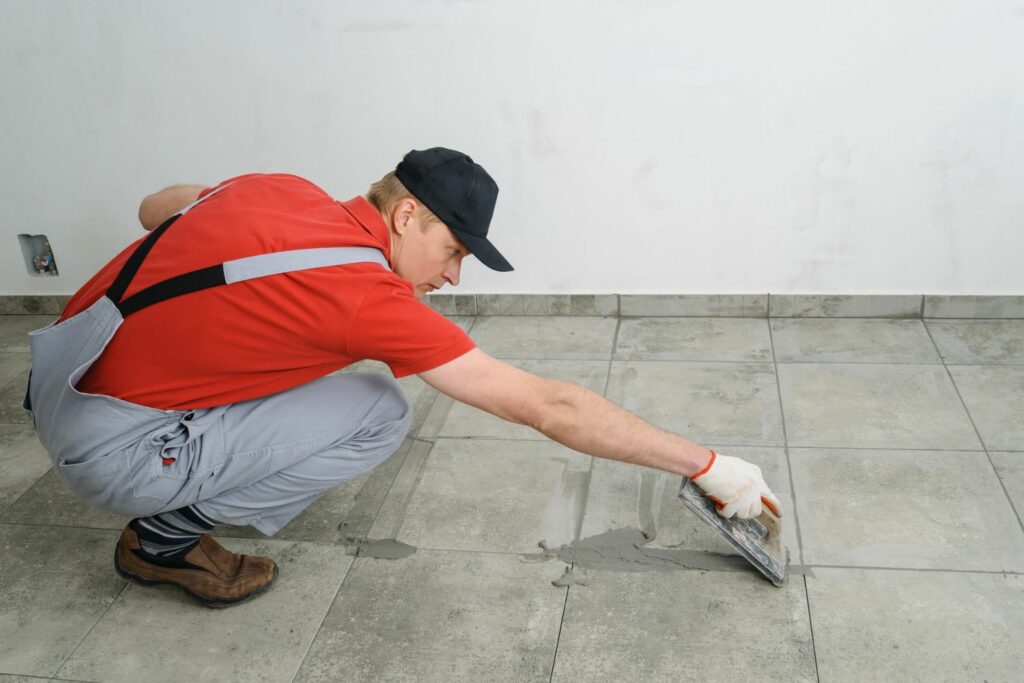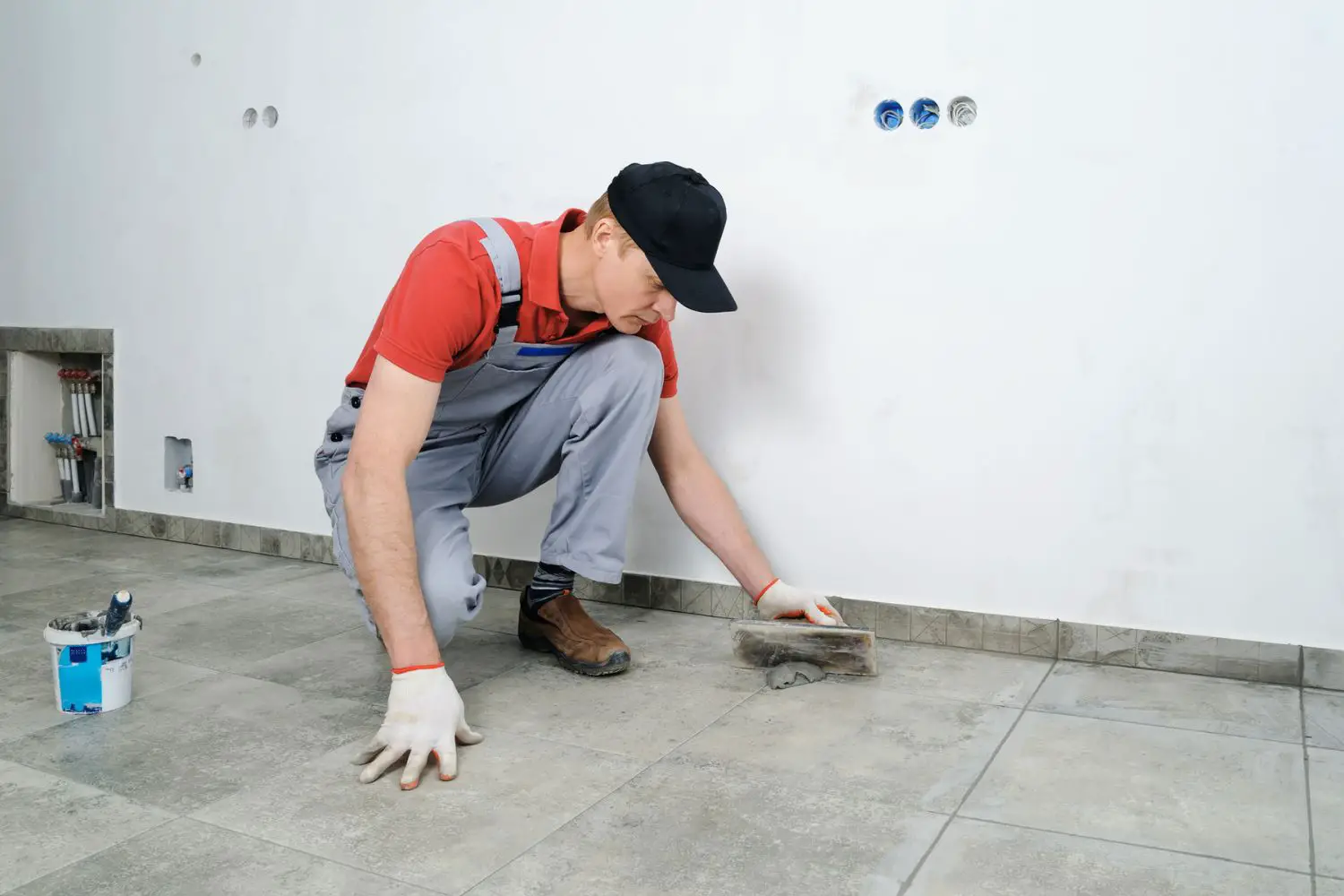Grout is one of the fundamentals of tile projects, but many people need to learn that grout can and should be changed. As grout ages, it may start to crack, leading to water damage in your walls, or black mold may grow on top of it (which happens in bathrooms and showers particularly) and can cause serious health complications. If you are discovering these issues just now and deciding on a grout renewal, you may want to know if you can grout over grout.
Regrouting can be a hassle and confusing if you do it alone for the first time. If you want to know more about it, you will find a complete guide below, along with answers to many questions you might ask during the process.
Can You Grout over Grout?
The short answer is yes and no — you can put new grout over old grout if it’s made of the same material as the old one, but you will have to remove the old grout if you plan on using a different type.
What Happens if You Put Grout on Top of Grout
Grouting over old grout can go two ways: it can look amazing and stay amazing for a long time, or it will look amazing and start to damage and become dirty in a couple of months. What happens if you put grout on top of grout all depends on the old and new grout types and if they are compatible with each other or not.
Benefits of Grouting over Old Grout
If you didn’t already note the answer to “can you grout over grout,” you can definitely do that and make it stick, if and only if you use the same type of grout.
Regrouting tile floor without removing old grout makes the whole affair less daunting, especially for beginners. Besides being less difficult overall, regrouting without removing old grout will save you plenty of time in the long run, as you will skip the grout-removal process.
Difficulty and time-saving aside, the new grout will give your tiles a brighter and cleaner look. If you were a fan of the old grout, you would have acquired the same look you had previous to any damage. And most importantly, you will have easily managed to fix any damage sustained throughout the years, be it cracks or separations.
Drawbacks of Applying Grout over Grout
Unlike using the same grout as the old one, if you opt for a different type and layer the new grout on top of the old one, you can be certain that the new grout will barely stick and need replacement in a few weeks or months.
Carelessness in choosing the right grout type will cause breakage and separation right away.
On top of that, the layer may look too thin and make the old grout layer visible, which will ruin your tile project’s look. Lastly, if there is only one area you need to fix, grouting over old grout with another sort of grout will make that area stand out… and not for the better.

How to Grout over Old Grout
You now know if you can grout over the grout, and it is time for a guide on how to do it! Before we get into the specifics, let me emphasize once more that you only need to remove the old grout if you plan on using a new grout type. If that is not the case, follow the steps below to understand how to grout over old grout:
- Cleaning the grout. Thoroughly clean the grout before applying a new coating to ensure no dirt or mold is trapped between the layers. This step is crucial as failure to complete it will result in the layer not sticking well enough and mold re-growing within a couple of months. In some cases, you may need to remove the top layer of the old grout if it is chipped away so that the new layer can adhere properly.
- Mixing the grout. Carefully read the instructions in the package and mix the grout well. Instructions may vary depending on what type of grout you use.
- Spreading the grout. Once done mixing, spread the grout over the area and use a squeegee tool to help push the mixture into the joints between the tiles.
- Removing excess grout. After layering the new grout over the old one, carefully remove any excess grout covering the tiles and in the joints with a sponge or a towel.
- Applying sealers. Let the newly-applied grout cure for a week, then apply sealers as needed.
If you do not feel confident you can regrout the tiles properly, you should request the help of a professional for the best results.
Can You Put a Thin Layer of Grout over Grout?
You can definitely put a thin layer of new grout over old grout. However, if you are trying to deal with cracks and separations, you must ensure that the coat is thick enough to deal with the damage. Otherwise, the thin layer will not fix your problems; instead, it will give them leeway to return soon.
On the other hand, thin grout layers may be better suited for small issues where the depth between the joints is covered by most of the existing grout. After removing a small part of the layer where your problem or problems are located, the thin layer will substitute for the part you will peel off.
Can You Grout over Grout to Change Color?
If you are like me and often make changes in your house, you may want to change the color of the grout in your tiles to better match your walls’ new color or the new furniture you got. Or has your grout been discolored and is ruining the beauty of your tile work?
To achieve the new look you are going for, you may wonder can you grout over grout with a new color. The answer, once again, is yes if you use the same type of grout but tinted with the color of your choice. Otherwise, if you have found a better type of grout, you will have to replace the old one completely and have the new grout colored to your taste. If you have porcelain or traditional ceramic tiles, you can use grout colorants to avoid the extra work.
Note: this method works only for porcelain or traditional glazed ceramic tiles. Using such colorants while having other types of tiles (e.g., unsealed natural stone tiles) will stain them.
Can You Silicone over Grout?
Is silicone over grout a possibility? It most definitely is. In fact, I suggest you always use silicone as a sealant on top of the grout to prevent mold from growing between the tile joints and water from damaging the walls. By preventing such issues, you can extend the grout’s lifespan.
For the best results, check if you are using the right sealant and one that matches the color of your grout so that it doesn’t make the tiles look unappealing.
As with grouting over old grout, you will need to clean the area properly from any impurities before proceeding with the silicone application. You should until it is dry before applying the silicone; otherwise, it will not stick properly. Likewise, let the silicone cure; once it finishes curing, you can relish the finished product.
Can You Paint over Grout?
Similarly to applying new grout over old grout for a color change, you can paint over the grout to attain a new look for your tile installation. As previously mentioned, sometimes the grout gets discolored, and we don’t want a tile project we are so proud of to lose its sparkle.
Instead of regrouting, painting over the grout is a much easier and faster solution. A simple grout paint or colorant is the only requirement to complete the job. Because this type of paint is close to epoxy paint, it will last for a long time after its application.
I touched upon this a bit earlier, but this method is unsafe for raw, unsealed tiles, as they will quickly absorb the paint, leaving them stained and difficult to clean. If you would like to use grout paint on these materials, what you can do is apply tile sealant before painting the grout.

